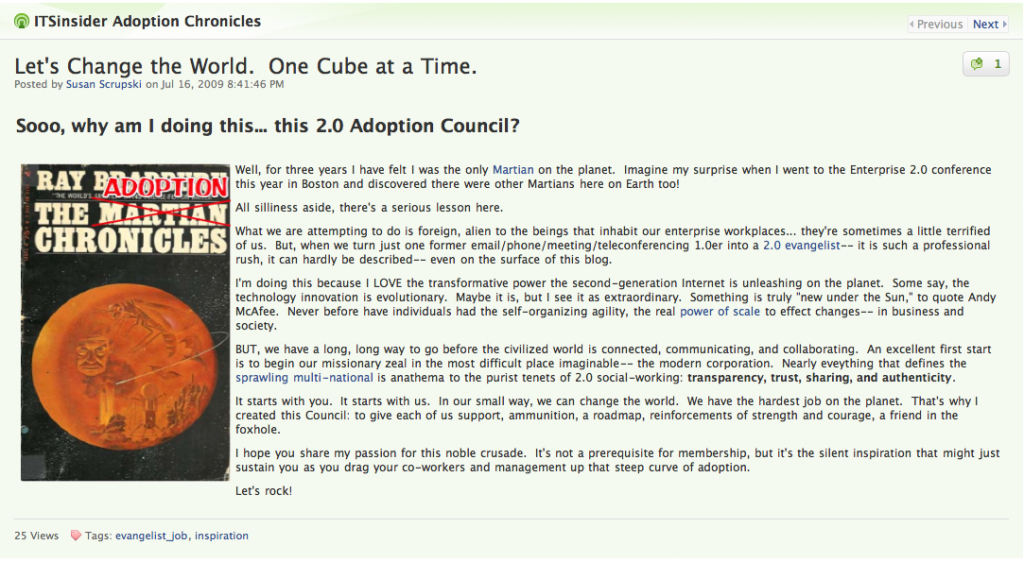What? Wow! How come?
History
Let’s begin at the beginning. The beginning of the social business (r)evolution didn’t begin in with web 2.0, it began with web 1.0 in the mid-90s. From research I published in 2000, we wrote this about the company Jeff founded in 1995, Razorfish:
Razorfish’s vision states, “Everything that can be digital, WILL be” The company claims that organizations that identify and embrace digital technology will succeed because they can react more quickly to market needs, are more efficient and customers actually enjoy doing business with them. In addition, Razorfish claims its digital communications solutions can make implementating this technology a reality for its clients. Razorfish believes companies must reevaluate their traditional business models in order to remain competitive in the digital economy. The company helps clients incorporate digital technologies… to better communicate and transact with their customers, suppliers, employees and other business partners.
A whole pack of Razorfish wannabes were singing the same tune in that sector at the time. I found them fascinating. But, in truth, it was really Jeff who wrote the original lyrics to that song. He set the tone for revitalization and disruption. When I came back into the business in 2006, it was that same energy with a new set of tools that attracted me to this sector. We’ve been calling it Enterprise 2.0, but over the past few weeks, I’ve come to agree that the Social Business Design strategy the Dachis Group is promoting is synonymous with the vision I see for what’s coming, for what’s possible. In essence, it’s the same vision Jeff had in the 90s– an extension of what has already been in motion.
Today
In the Council, our members are truly on the front lines of massive transformation at their large enterprises. But they know it’s only the beginning of something profound. One of our members said recently, “I’ve never, in my 25-yr career, worked on something so valued and so feared by executives in the same company. This must be big.”
For the past few hundred years, we’ve been working the old way. I look at this stage of market maturity as analogous to the age of enlightenment. It’s an interesting blend of art, science, and intellectual thinking that is dominating the conversation on how we will work in the future. One of our members referred to it as the “social spring” after the dark, aftermath of the Internet dotcom winter. Once this digital-social idealism propagates around the globe and is embraced by leading institutions, that’s when the real work will begin, and all customers are going to need help getting to the next level of productivity and business performance. When it does, we will be there. Ready for what’s next.
What’s next for us?
I founded the Council last summer. Here was my introductory post to the members on why I did:
In concert with the Dachis Group, which now includes Lee Bryant and the whole Headshift team, Dion Hinchcliffe, Peter Kim, Jevon MacDonald, Bryan Menell, and Kate Niederhoffer, as well as scores of talented others, we can bring incomparable resources to our members– in programs and actionable discussion that will help them achieve their goals. I’m truly thrilled to be joining the Dachis team and am looking forward to seeing all our hard work come to fruition.




